ASUS at Computex 2016: The 10 Years of the Republic Of Gamers (ROG) Booth Tour
by Ian Cutress on June 22, 2016 8:00 AM ESTI wanted to touch on some of the non-ROG hardware in the ASUS Booth, some of which we haven’t seen before. First up is the TUF range, which ASUS uses as their hardware wearing, more physically demanding and higher warrantied product line. Typically we see one or two TUF motherboards each generation, with the Sabertooth variant in a camouflage design and the Mark S in white camo. At this point the Mark S doesn’t have the TUF branding, but it takes a lot of the aesthetic design – we reviewed the genesis model #0001 off the production line back in November 2014.
990FX Sabertooth R3.0
Despite AMD’s 990FX platform being nearly five years old, the FX processor line still represents AMD’s high performing processor lineup for consumers. Due to the age, most motherboard manufacturers issue the odd update now and again to refresh the line with some of the latest technologies. The 990FX Sabertooth has had two versions already, and at Computex we saw R3.0 with RGB LEDs, reinforced PCIe slots, M.2 integration, USB 3.1 Type-C, semi-transparent PCIe latches and a new variant of ASUS’ Q-LED.
Being part of the TUF family means that ASUS tends to over-engineer the board to cope is harsher environments. This means upgraded power delivery, combination heatsinks and that reinforced PCIe slot, but it also gets visual enhancements such as the color scheme and rear IO cover to maintain the look.
The rear panel comes with four USB 3.0 ports from the chipset as well as four USB 3.1 ports. These are from ASMedia ASM1142 controllers, with one for each pair of ports. One of these is USB Type-C, supporting the reversible USB connection standard now being seen on some smartphones.
One of the interesting things for me, however, was the adjustment of the Q-LEDs. ASUS’ system uses a series of LEDs that light up as the system turns on and configures itself for the hardware inside. As the hardware may have changed since the startup, or the quality of the hardware has changed over time, the system needs to ‘retrain’ its pathways to make sure it can support the data rates the BIOS tells it to. As the system checks different parts of itself in POST, the LEDs relating to CPU, DRAM, VGA, Booting and PWR light up in turn. If there is an issue, the LED that stays lit should show you which part has an issue.
Now normally the Q-LED layout was a small segment on the top right of the board, with some onboard text saying which LED did what. It would seem that for the R3.0, the Q-LEDs have made it on the chipset heatsink. I think this is a great idea, as it allows for a bigger font size and arguably more powerful/configurable LEDs next to a microcontroller. Ultimately I think the Q-LEDs should be nearer the bottom, just in-case a large GPU comes along and blocks the view.
Whether you think this is useful for a 990FX board in mid-2016 is up to you. ASUS seems to think so.
TUF Detective
Attached to the Z170 TUF motherboard was a tablet running the TUF Detective application. The idea here is that a user can see fan/temperature/voltage values on the fly, or control the system via the app. At present the tablet has to be connected to the motherboard, and we have seen something similar to this on ASUS Extreme motherboards and overclocking, however from the monitoring point of view this is an interesting angle. If ASUS combined this with a self-contained IPMI control chip similar to servers, and a WiFi/Bluetooth module that was separate, perhaps a user could control their system via WiFi rather than USB.


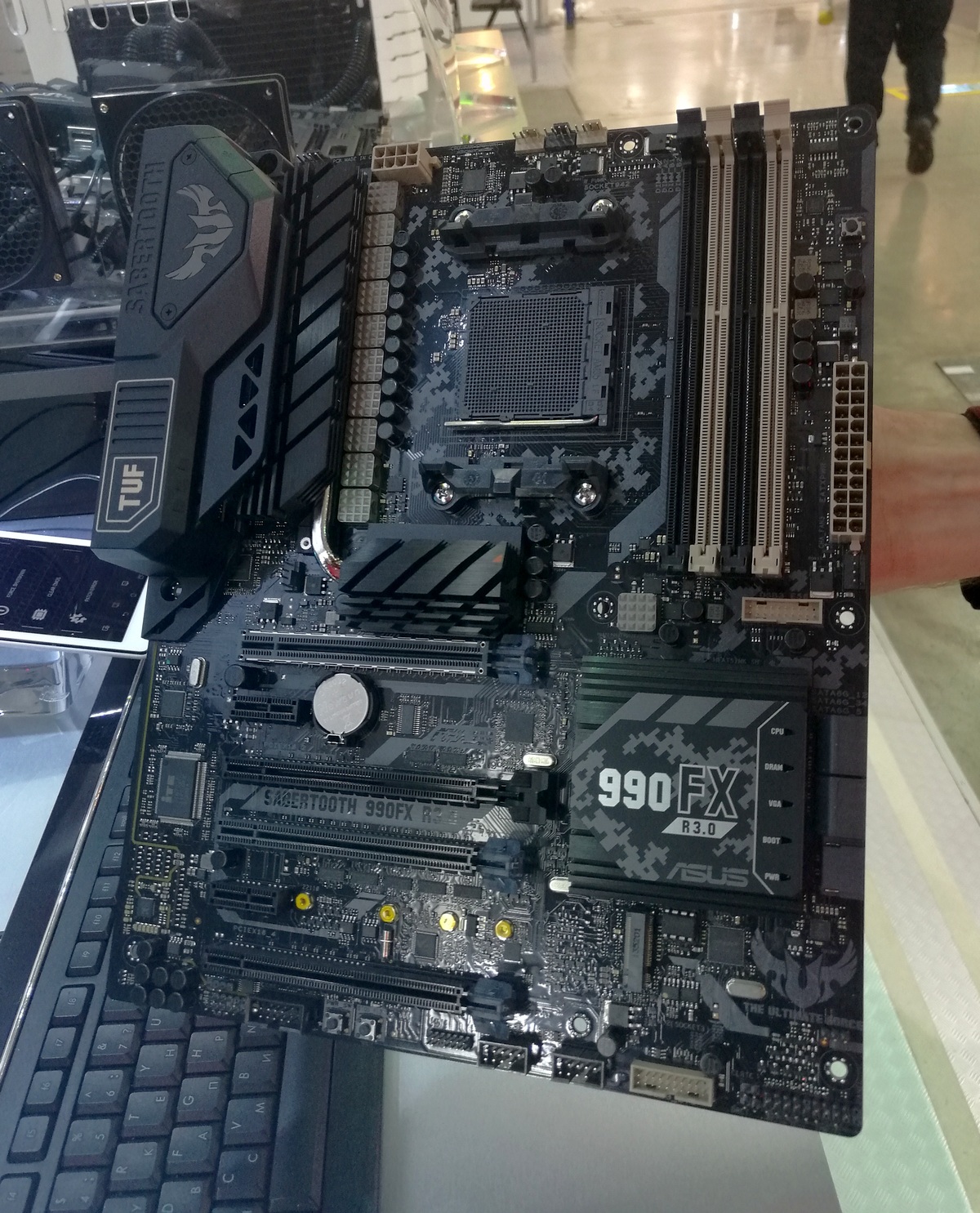
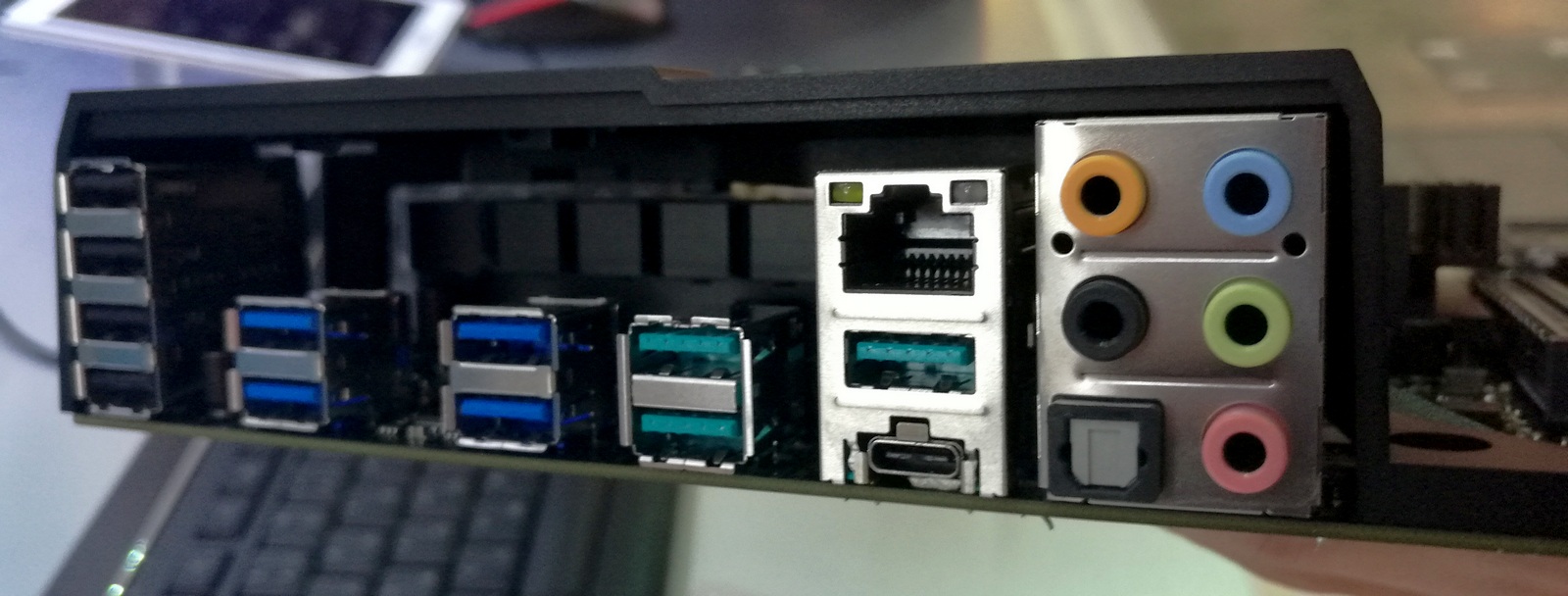
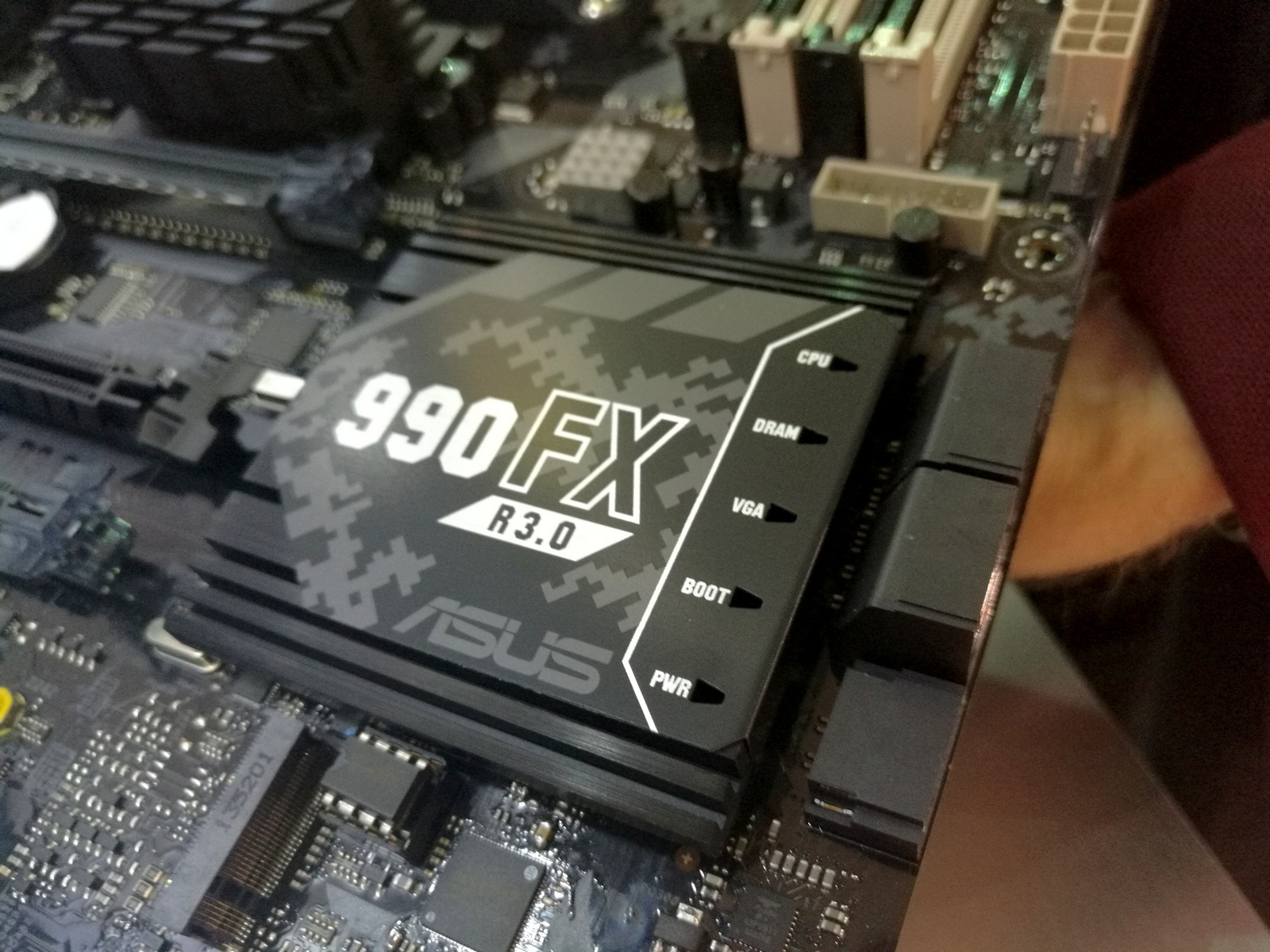
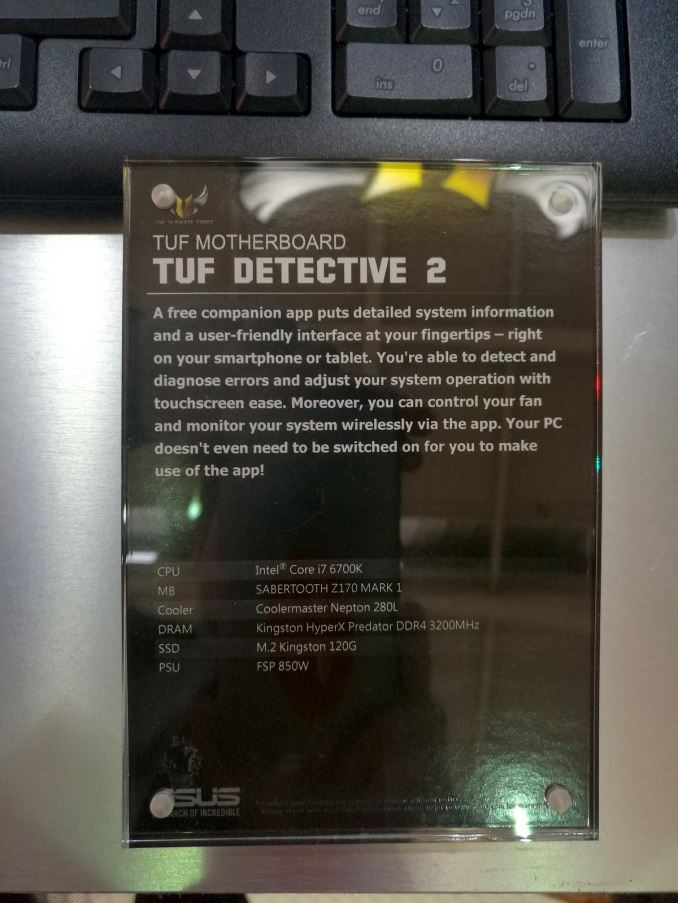
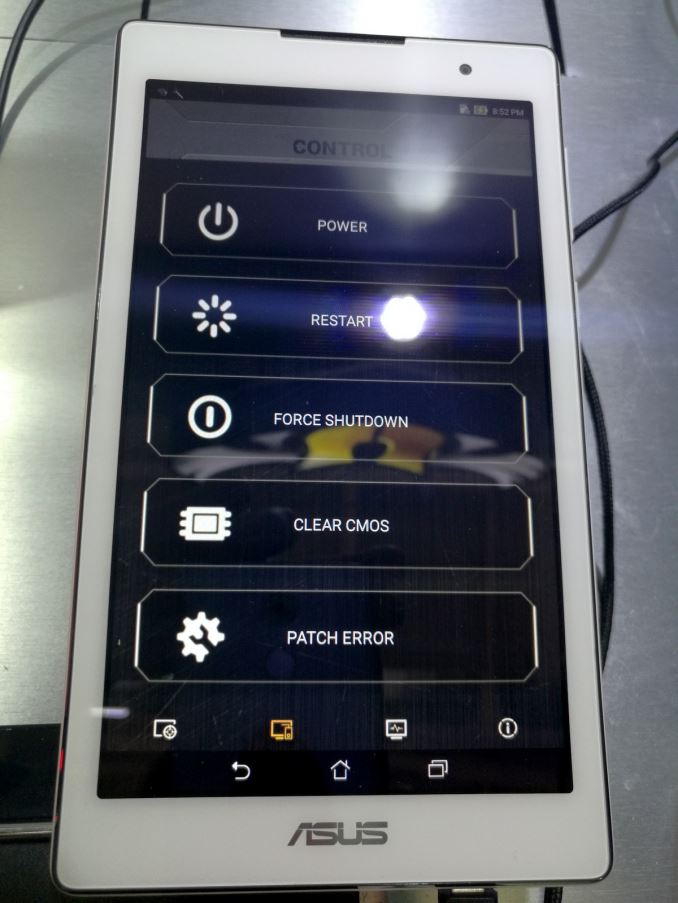








43 Comments
View All Comments
A5 - Wednesday, June 22, 2016 - link
End users who are buying Broadwell-E are almost always doing it for 3+ way SLI reasons, which pretty much forces you into full ATX.They presumably have research (or data from the past) that says they will not sell enough mATX boards with HEDT chipsets to be worth the engineering effort.
Bragabondio - Wednesday, June 22, 2016 - link
Well now that Nvidia would not support more than 2 cards SLI (except for benchmarking applications) the argument for 3 way SLI becomes moot. (micro ATX supports 2 way SLI). Starting to think we will be stuck with 4 core CPUs for the next 5+ years unless ZEN is a huge success.Sushisamurai - Wednesday, June 22, 2016 - link
uhhh... Nvidia still has 3 way/4 way SLI - they've only restricted SLI requirements to PCIe x8, versus AMD's crossfire x4; presumably to maintain a performance target. With "consumer" lines of Intel CPU's, you only get max 20 PCIe lanes (correct me if I'm wrong), allowing only 2 way SLI. HEDT chips have 28 to 40 to 40. Hence, 3 way to 4 way SLI is pretty much restricted purely to HEDT. Anandtech had an article about CPU/PCIe bottleneck with SLI/CF a ?few years back. If memory serves me correctly, PCIe x4 bottlenecks modern high end GPU's, and an i5 can run 2 high end GPU's without bottlenecking - it is when you go 3 cards you'll need an i7 for gaming (assuming you have enough lanes), and HEDT (my opinion now) if you want 4 cards (due to PCIe lanes, and enough cores to feed the cards)Bragabondio - Wednesday, June 22, 2016 - link
Correct until GTX 1070&1080 were introduced. Starting with the GeForce GTX 1080, Nvidia is discontinuing official support for 3-way and 4-way multi-GPU SLI setups.http://www.pcworld.com/article/3071332/hardware/it...
Sushisamurai - Thursday, June 23, 2016 - link
Oh that is messed up. I've read their white paper, didn't even know they trashed the enthusiast key option. Wow that's super unfortunate.alphasquadron - Wednesday, June 22, 2016 - link
"So I don't understand why manufacturers don't want my money?"I think they do but as stated in the article:
"The three major form factors for custom build personal computers, in order of popularity, are ATX, followed by micro-ATX and then mini-ITX."
I too am waiting for an external dock that I can plug my laptop into and achieve 80-90% of performance of a full size desktop. Whoever makes this will have grabbed two markets. Those who want a gaming desktop and are okay with huge cases (usually younger) and professionals like me who want the same but would never get a gigantic case. If we can get an external dock that tries to be compatible with most laptops as much as possible without looking like an eyesore and can deliver close to desktop performance, it would be an instant buy for a lot of people. As you now have a laptop and desktop. Though I think that this would come from a laptop manufacturer as if it was very well made and successful, I would think the market that would buy a desktop over a laptop for 10% gain in performance would be very small.
Bragabondio - Wednesday, June 22, 2016 - link
Guess I have to give my dream for small but super powerful desktop PC and embrace the reality that laptop/surface device + dock is the future for the middle aged professional :)Bragabondio - Wednesday, June 22, 2016 - link
One more thing. The ATX may be indeed most popular size but that is mostly due to tradition not function as 99% of the consumer market don't need/use all the slots and space of a larger ATX case. That is why I like project Avalon but nobody knows if it ever would become a reality.Ananke - Wednesday, June 22, 2016 - link
Unfortunately, in the current moment of the high tech industry, "middle age" is very inappropriate. Companies think their teen- and twenty-year old customers have many thousands of disposable income , and cater to them exclusively. Besides, young people buy easily obsolete or inferior tech, since they don't have comparison base :):). The only problem for the tech industry is, that younger population usually has no disposable income /and that's kinda universal truth over many centuries/ and just doesn't buy because it can't pay.Bragabondio - Wednesday, June 22, 2016 - link
well said Ananke! Plus, as a coup de grace now we have to deal with gazillion of RGB lights inside our cases - if I wanted a freaking X-mas tree inside my case I would have bought one ! :)